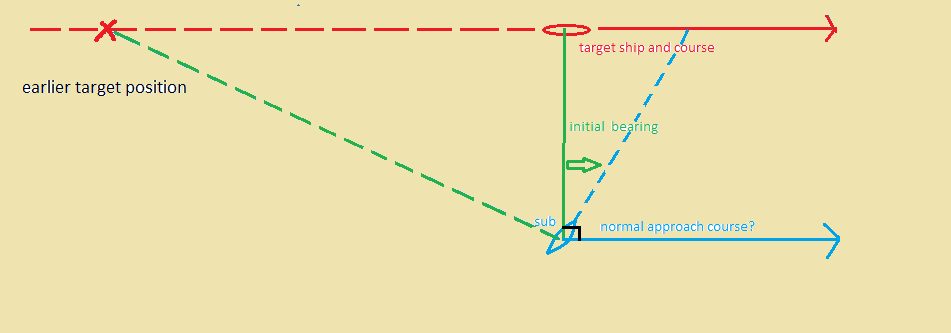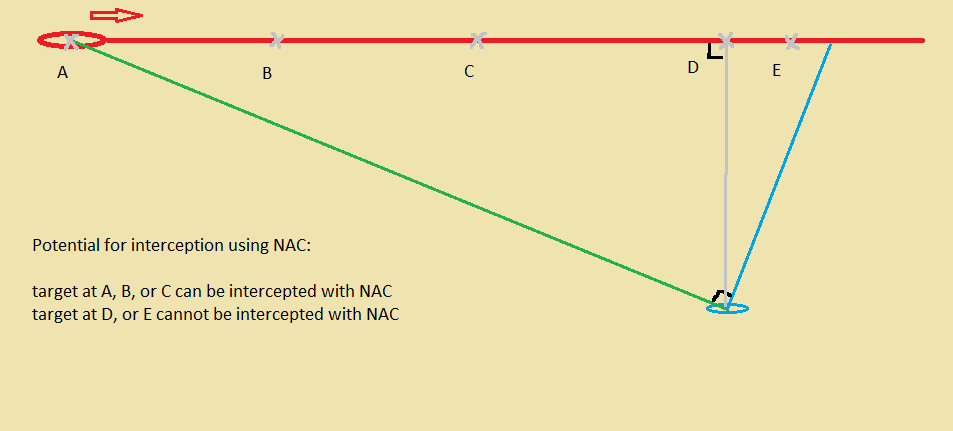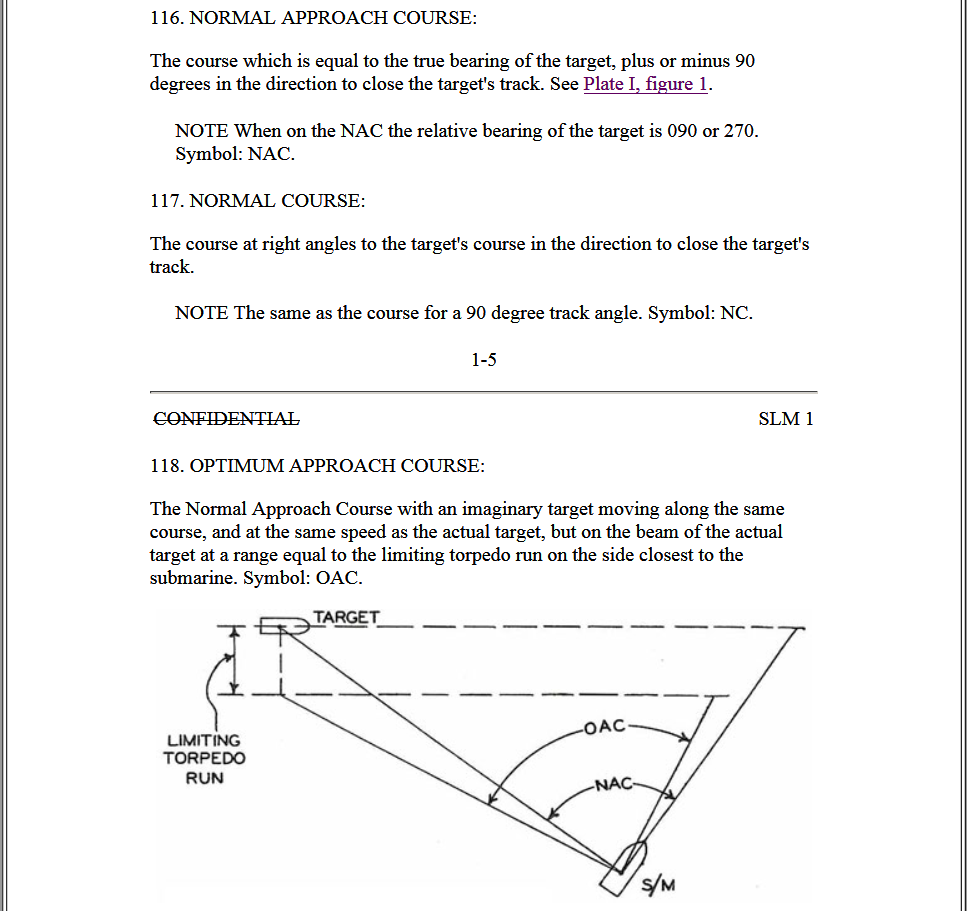
|
|
SUBSIM: The Web's #1 resource for all submarine & naval simulations since 1997
 |
SUBSIM: The Web's #1 resource for all submarine & naval simulations since 1997 |
|
|||||||||
 |
|
|
Thread Tools | Display Modes |
 04-24-14, 10:30 PM
04-24-14, 10:30 PM
|
#1 |
|
Mate
 Join Date: Aug 2007
Location: Seattle
Posts: 51
Downloads: 27
Uploads: 0
|
Hey, long time no post. I'm trying SH4 with the GFO (game fixes only) mod. I wanted to try playing without map contact updates, but it was hard because it even removed the sonar bearing lines. I tried finding some tutorials for playing without map contact updates, but I couldn't find any good ones. They all seem to be overly simplified. Either the target is plainly visible from the start or else radar or active sonar is used to get an absolute position or they ask the omniscient WO. But what about the case when you're too far away to see or ping it, and you don't have radar?
I played with it for the past 8 hours or so and found a couple of workable approaches. My first approach was to use the information from passive sonar to do a TMA (target motion analysis). I wrote a program to automate the TMA and spit out an intercept vector that would put me in a firing position 1000 yards off the target's side, and on the whole it works fairly well. The main benefit of this approach is that it gives you the target's absolute position, course, speed, AoB, etc. just from passive sonar readings, but it's a bit of a pain to write down the bearings on paper and alt-tab out of the game for a couple minutes to input the data. I also had trouble with my incompetent crew failing to report and track sound contacts despite them being clearly audible, and when that happened the approach degraded because it's hard to be a good sonarman and get accurate readings in addition to plotting on the map and everything else I have to do. Precision is important with this approach. So my second approach was based on just using the rate of bearing change to find a lead pursuit course with the target. If you're on a lead pursuit vector (i.e. a straight-line course and speed on which you will intercept the target), then the target should remain at a constant bearing. (This is in contrast to a lag pursuit course where you simply keep your bow pointed at the target. Subs are too slow for that to be viable most of the time.) So what I did was:
The upside of this approach is that it's simpler than using TMA and doesn't require alt-tabbing out of the game. And you don't have to be very precise to get good results. The downside is that it doesn't give you the target's position, course, speed, or AoB, so you still have to figure that stuff out using other sensors and you can't directly sail to a firing position. But it's good to know how to do that anyway. Being on a lead pursuit course takes most of the guesswork out of interception, and when the target gets within 4-8 km or so you can begin roughly estimating its position and plotting its track using the following technique:
I use this overall approach with success in SH3 + GWX. (I went back to it because SH4 crashed and corrupted my saved games on 2 out of 3 patrols. :-|) Last edited by AdamMil; 04-29-14 at 10:49 AM. |

|

|
 04-25-14, 01:46 AM
04-25-14, 01:46 AM
|
#2 |
|
Silent Hunter
 Join Date: Sep 2010
Posts: 3,975
Downloads: 153
Uploads: 11
|
I like that you worked this out and all, but there is a way that achieves the same essential result with less maneuvering. [I'm not familiar with Newton's method so I can't say anything about that.] |

|

|
 04-25-14, 02:38 AM
04-25-14, 02:38 AM
|
#3 |
|
Mate
 Join Date: Aug 2007
Location: Seattle
Posts: 51
Downloads: 27
Uploads: 0
|
Thanks for the example, but are you sure this works reliably? Let's say that after putting him on your starboard beam (90 deg. relative), you and him are now on similar courses. When you adjust your speed to maintain bearing, you'd end up adjusting your speed to be nearly the same as his. Thus you'd be traveling nearly parallel, which seems to me like the longest way to intercept.
|

|

|
 04-26-14, 12:34 AM
04-26-14, 12:34 AM
|
#4 | |
|
Silent Hunter
 Join Date: Sep 2010
Posts: 3,975
Downloads: 153
Uploads: 11
|
I'm sure it will work within the constraints I mentioned. It was taught in the US Navy, and Dick O'Kane describes it in his book, CLEAR THE BRIDGE. Quote:
This isn't really the case. The NAC is 90 deg. off the bearing, the target's course could be almost anything, nor do we need to know what it is. 
|
|

|

|
 04-26-14, 10:03 AM
04-26-14, 10:03 AM
|
#5 |
|
Gefallen Engel U-666
|
AdamMil!
 after two+ years of silent running and a first rate diagrammed lesson from TorpX...you're well up on the DAY! after two+ years of silent running and a first rate diagrammed lesson from TorpX...you're well up on the DAY!
__________________
"Only two things are infinite; The Universe and human squirrelyness?!! |

|

|
 04-26-14, 10:47 PM
04-26-14, 10:47 PM
|
#6 |
|
Mate
 Join Date: Aug 2007
Location: Seattle
Posts: 51
Downloads: 27
Uploads: 0
|
Perhaps I'm dense, but I just don't see it. If they taught it, then I imagine it must have worked, so I'm probably misunderstanding you. But what about these cases?
  In both cases, the sub turns to put the target on its beam, and in both cases it can adjust its speed to keep the target there, but in neither case will it ever intercept, no matter how slow the target is going. Anyway, these examples call into question my own approach as well, since they show that it's possible to keep the target on a constant bearing without being on a lead pursuit course, even if one exists. If you overshoot by too much you might wind up on homing in on one of the constant-bearing courses that isn't an intercept course. (But I think it's less likely to occur with my 'algorithm' since you start out pointing yourself at the target.) @Aktungbby: Thanks for the welcome. :-) Last edited by AdamMil; 04-27-14 at 12:04 AM. |

|

|
 04-27-14, 12:00 AM
04-27-14, 12:00 AM
|
#7 | |
|
Loader
 Join Date: Jul 2013
Posts: 89
Downloads: 44
Uploads: 0
|
Quote:
In regards to example 2; you'll hear his screws become quieter as you open the range, indicating you are moving away from him and need to readjust your course if you wish to still intercept (which would turn into a tail-chase, not something I typically recommend).
__________________
The only sound that still scares me to this day... The silence when the pinging stops. 
|
|

|

|
 04-27-14, 12:03 AM
04-27-14, 12:03 AM
|
#8 |
|
Mate
 Join Date: Aug 2007
Location: Seattle
Posts: 51
Downloads: 27
Uploads: 0
|
Of course, but my point regards an easy procedure to establish a good intercept course. I'm trying to understand this Normal Approach Course technique, which given my (mis)understanding of it seems to produce weird results in these cases.
|

|

|
 04-27-14, 04:45 PM
04-27-14, 04:45 PM
|
#9 | |
|
Silent Hunter
 Join Date: Sep 2010
Posts: 3,975
Downloads: 153
Uploads: 11
|
Quote:
You are right about the cases you illustrated. Neither of these would permit an interception with the Normal Approach Course. If the target had been detected earlier, the situation would be very different.  Your second case is just like the first, except the target is even farther past. 
|
|

|

|
 04-27-14, 10:07 PM
04-27-14, 10:07 PM
|
#10 |
|
Mate
 Join Date: Aug 2007
Location: Seattle
Posts: 51
Downloads: 27
Uploads: 0
|
Ahh, I guess that's what you meant when you originally said "if ... it has already passed". Of course, without knowing the target's course, there's no way to know whether the target has passed or not, but as Warren Peace said, I can just try it out and see if the target is getting closer. (Thankfully SH3 sonarmen can discern that instantly. :-)
So it does seem like a good approach to know, since it's simple and when it works it does give the slowest possible interception as you said, and slower means stealthier. In some cases (e.g. when the target is close to point D) it could take 'forever' but I believe you when you say it works pretty well in practice. In fact, our two approaches seem quite similar in that they both attempt to find a lead pursuit course based on zeroing the rate of bearing change. Yours (NAC) fixes course and adjusts speed to find the minimum speed required, but fails if the target isn't 'behind' you. Mine fixes speed and adjusts course to find the minimum time required, but fails if the chosen speed is too low. Since I'm early in the war I can afford to zip around on the surface and just want the fastest intercept. Later, when I have to be stealthier, I might switch to NAC to find the stealthiest intercept. :-) I appreciate the explanation, in any case! I learned something. Last edited by AdamMil; 04-27-14 at 11:36 PM. |

|

|
 04-27-14, 11:42 PM
04-27-14, 11:42 PM
|
#11 |
|
Lieutenant
 Join Date: Jan 2014
Location: USS Seal - Somewhere in the Pacific
Posts: 268
Downloads: 141
Uploads: 3
|
I'll add my thanks as well. A good read. One item I notice isn't being expressly remarked on it fuel conservation, which would have been a very real consideration. Along with everything else, making your intercept in the most fuel efficient manner would have been important I would think.
__________________
T. E. Thompson, LTCDR
Commanding Officer, U.S.S. Seal (formerly S-40 (SS-145)) |

|

|
 04-28-14, 12:16 AM
04-28-14, 12:16 AM
|
#12 | |
|
Mate
 Join Date: Aug 2007
Location: Seattle
Posts: 51
Downloads: 27
Uploads: 0
|
Quote:
What I personally do, though, is cruise around at "ahead slow" speed, giving me about double the range of "ahead standard" while only reducing speed by about 25-35%, so I don't have to worry about fuel usage in combat. I try to intercept on the surface at standard or full and only submerge once I get within 3-4 km or so. But I'm still early in the war... |
|

|

|
 04-28-14, 01:49 AM
04-28-14, 01:49 AM
|
#13 | ||
|
Silent Hunter
 Join Date: Sep 2010
Posts: 3,975
Downloads: 153
Uploads: 11
|
Quote:
Yes. The Normal Approach Course was mainly something applied to submerged approaches. Quote:
 I've never really used the OAC, but I've certainly used the NAC many times. |
||

|

|
 04-28-14, 02:21 AM
04-28-14, 02:21 AM
|
#14 | |
|
Mate
 Join Date: Aug 2007
Location: Seattle
Posts: 51
Downloads: 27
Uploads: 0
|
Quote:
The OAC seems to require knowing the target's course, so I imagine it's one of those things you'd use after you get close enough to see which way the target's headed. I didn't get the impression that you were presenting an overly rigid method, by the way. :-) These are all good tools to have in one's toolkit, to use and adapt as best fits the situation... |
|

|

|
 04-28-14, 10:08 AM
04-28-14, 10:08 AM
|
#15 | |
|
Samurai Navy
 Join Date: Feb 2014
Location: Italy
Posts: 554
Downloads: 82
Uploads: 2
|
First of all many thanks for this most interesting and educational thread. I really appreciate it.
Quote:
Maybe I'm not telling you anything newer, but worth mentioning. Once you have found and set your boat on the NAC, you have at least two methods that I'm aware of. 1) First ther is the "four bearing method". It involves sampling the bearing to tgt in temporal steps and plotting. TMA done by hand, requires times and patience, but gives out good results. I rarely use this. 2) Then there is the "Using the [Is-Was disk] [Mk13 submarine attack course finder] to conduct a passive sonar only approach" method. This requires time and practice, and the use of the Is-Was disk (you can make one yourself or use a mod that give you that in-game). This method is the one I almost always use when first detecting long range hydrophone contacts. I do not use the "whole" methods, just the first three-four steps to obtain 3 estimated possible courses and speeds of tgt. In this way I can plot them and so get a visual aid that help me much in analyzing the different tatical options at hand and finally choose an approach course that suit me the most. I find it reasonable fast to use and "less annoying" than the four bearings method. You can find detailed documents about this methods (and others) inside the [hsGUI v3.1] mod for SHIII. I think that if you already had work out out and egaged the NAC to your tgt, then you could easly make a gross estimation of the OAC simply using the second method cited above while your are waiting to close range. Last edited by banryu79; 04-28-14 at 04:17 PM. |
|

|

|
 |
|
|
